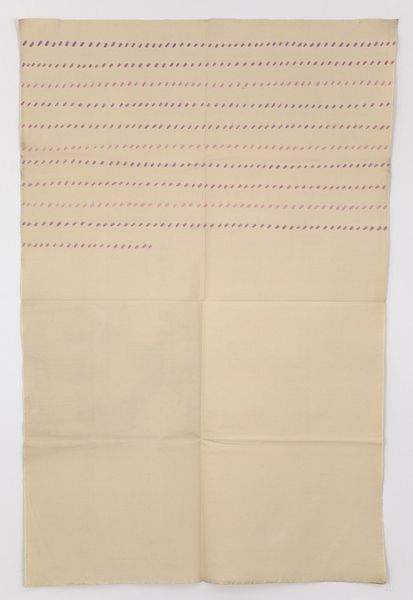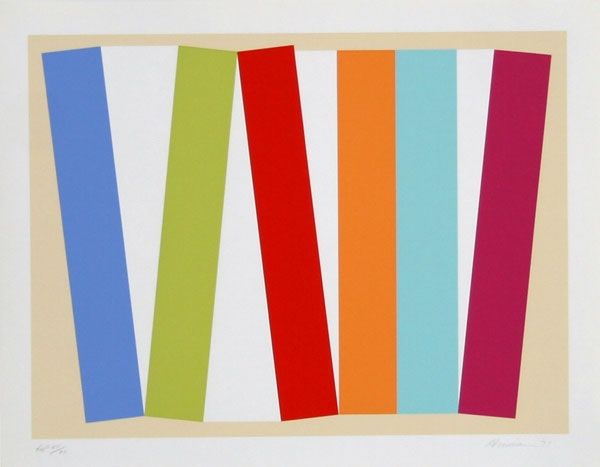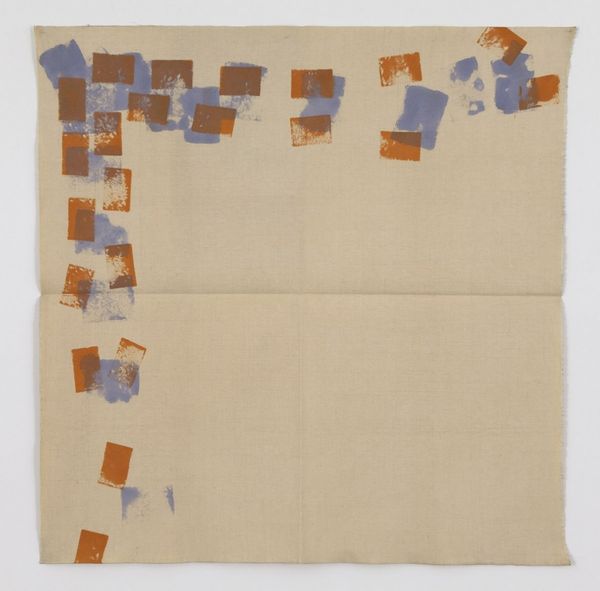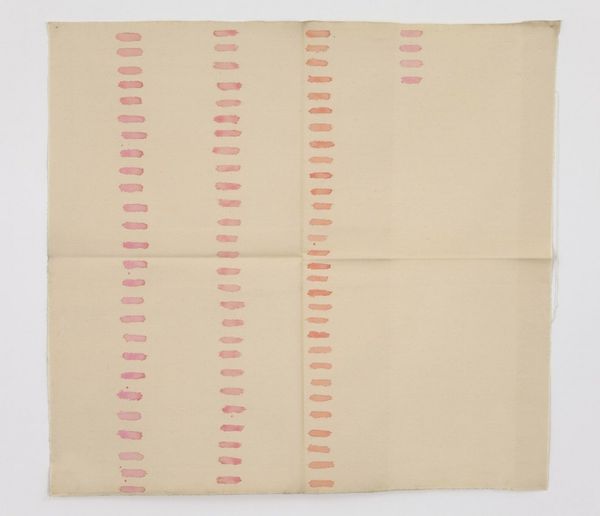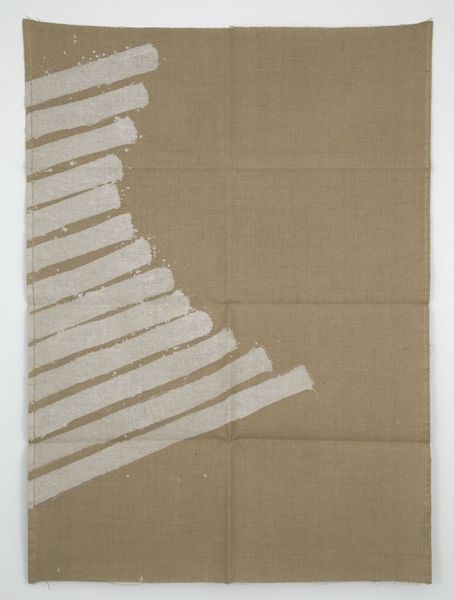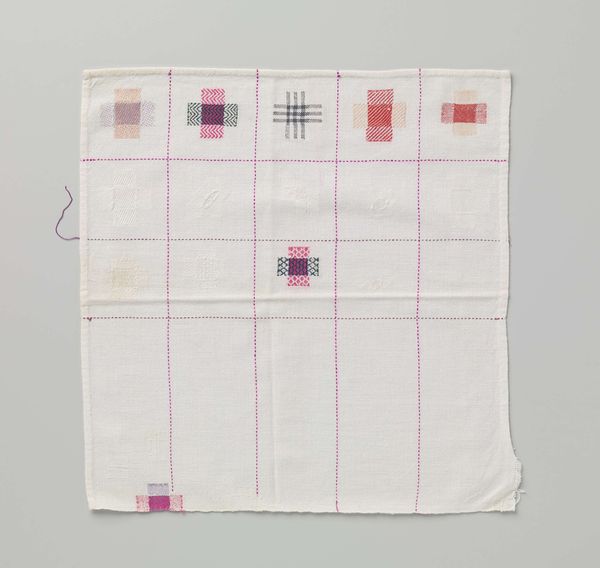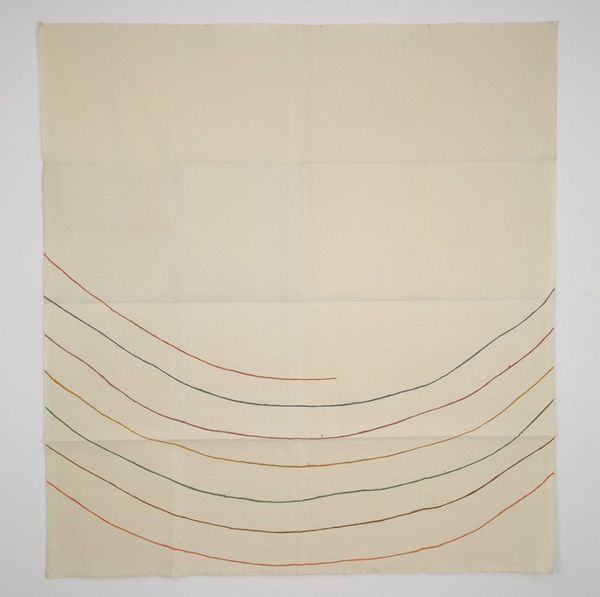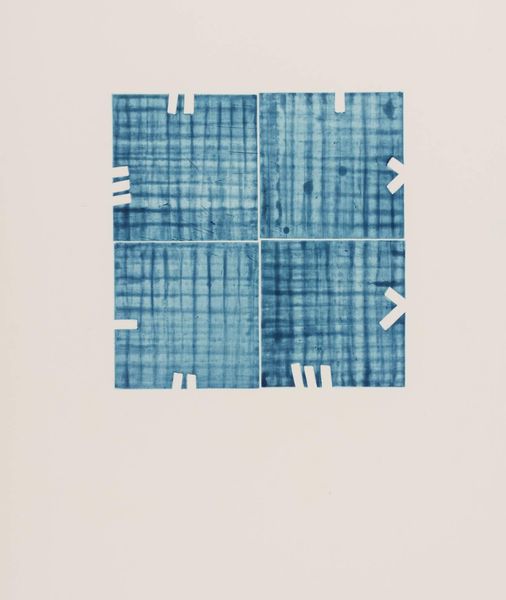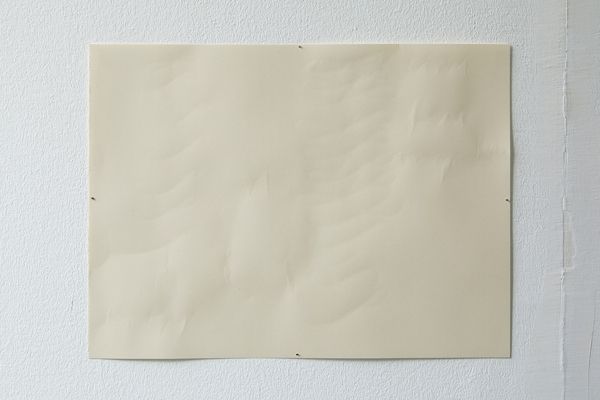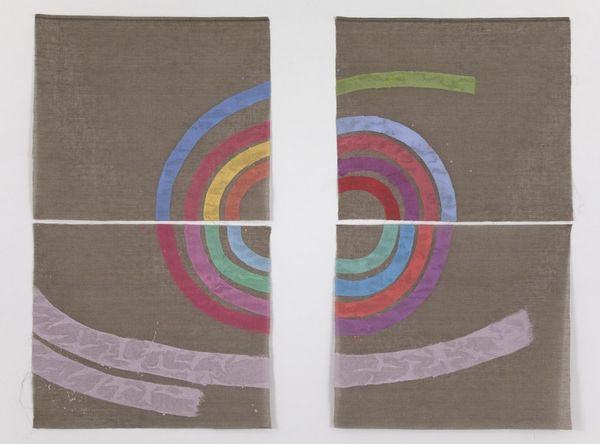
Copyright: Giorgio Griffa,Fair Use
Editor: Here we have Giorgio Griffa's "Policromo," created in 1976. It's a watercolor painting on what appears to be raw canvas. The colors are quite delicate, but the composition feels almost like a coded message. What do you see in this piece, Professor? Curator: Thank you. Viewing “Policromo” through a formalist lens, several elements immediately stand out. First, the support itself: the raw, unprimed canvas, with its visible weave and deliberately unfinished edges, denies any illusionistic depth. It affirms the artwork's status as a material object. Then there are the marks themselves. Note how each vertical stroke of color maintains a degree of autonomy. Are they independent entities or parts of a cohesive whole? Editor: I see what you mean. They are placed together as if to form some sort of whole, yet the spaces and subtle chromatic variations prevent a gestalt closure. What should we call them--shapes, colors, or strokes? Curator: Let’s look more carefully at how each of them is applied. The watercolour medium permits an uneven absorption into the raw canvas, yielding modulated color values within the supposedly unitary “stroke.” These micro-variations preclude semantic interpretation and privilege the pure visual experience, where figure and ground merge. In sum, these brushstrokes aren’t representational. Instead, they serve to investigate painting's fundamental components, line, color and surface. Do you find the composition harmonious or dissonant? Editor: I lean towards harmonious. While individual strokes are different, there is enough repetition and controlled variation for the overall effect to feel quite balanced. Curator: I agree. The subtle orchestration of colors suggests a structured system or, perhaps, an intentionally disordered sequence, much like serial musical composition. Griffa, by minimizing external references, challenges us to examine the inherent qualities of painting. I find I must return to the basic vocabulary of vision: hue, saturation, and texture. And I learn to accept that perhaps some meanings can only be registered through perception. Editor: I hadn't considered that perspective. Now, I’m left wondering how this emphasis on visual elements allows for any personal interpretation at all? Thanks, Professor.
Comments
No comments
Be the first to comment and join the conversation on the ultimate creative platform.


